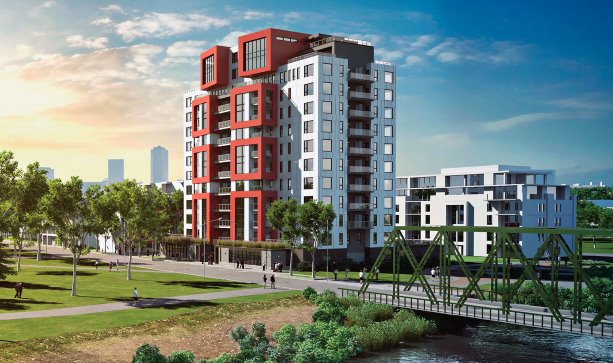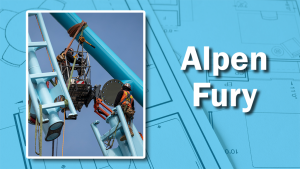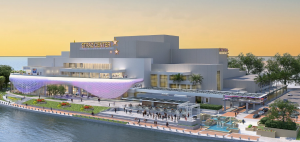A 13-storey condo tower is hardly news unless that tower’s structure is entirely built of wood.
That is the case of the Origine, a 94-unit residence set to start construction in Quebec City next April.
André Huot believes it will be the first all-wood residential structure for a "tall building" — a term coined for wood buildings more than six storeys high — in Canada and possibly North America.
Huot is the business development manager of Nordic Structures, a Quebec-based manufacturer that is supplying the engineered mass timber products for the job.
He says mass timber products are poised to be a game-changer in a move to build more green-friendly highrises.
The unusual structure of the Origine incorporates cross-laminated timber (CLT) for walls and floors and glued-laminated timber (Glulam) for posts and beams. Both materials are made and supplied by Nordic Structures under the names Nordic X-lam (CLT) and Nordic Lam (Glulam).
Nordic X-lam, which will also be applied in elevator and stair shafts, consists of panels 8-by-64-feet long composed of multiple layers of 2-by-4s bonded together crosswise with an structural adhesive, says Huot.
There are a number of reasons developers might want to start considering building projects like the Origine in wood. For starters, the time it takes to build them, he says.
The Origine, by example, will be completed in 12 months, about six months less than a similar concrete structure would take, says Huot.
Another benefit is that the structure is about 50 per cent lighter, which allows for a smaller, less expensive supporting foundation.
"If you are building on a site where the soil is poor, you can build higher in wood so you are getting more density," he adds.
Construction assembly is straightforward.
"You don’t need to show carpenters or any subtrades how to build these buildings. It is very intuitive."
Furthermore, as each storey goes up, all mechanical/electrical, exterior cladding and interior work can start immediately, rather than waiting for the structure to be at or near full height.
Although wood does not meet the prescriptive provisions for tall buildings in building codes across Canada, the Quebec engineered wood manufacturer was able to demonstrate that its products met or exceeded the performance requirements of non-combustible steel or concrete highrises, Huot says.
In fire tests performed on a three-storey mockup at National Research Council Canada (NRCC) facilities in Ottawa (observed by a number of major Canadian city fire departments) CLT exceeded the two-hour required rating.
In addition, Nordic’s engineering department has shown that mass timber buildings can stand up to 30 storeys high. To help launch the new industry, funding assistance for research and development from the Quebec and federal governments has been vital, Huot says, pointing out it cost almost $500,000 for fire tests at the NRCC.
"You can’t do (finance) this on your own and make it profitable for anyone wanting to do such a building."
There are plenty of reasons why governments should want to assist companies in research and development, starting with the green advantage wood holds over alternatives.
Huot says for every cubic metre of wood used in a wood structure, 750 kilograms of CO2 is sequestered into the wood. The Origine is targeting a certification in the Leadership in Energy and Environmental Design’s (LEED) new V4 version.
Origine will be clad in aluminum panels and constructed by EBC Inc. It will be the tallest mass timber tower in Quebec but it won’t be the first. Nordic is also supplying mass timber for an eight-storey all-wood residential complex in Griffintown, a downtown neighbourhood in Montreal. The first CLT panels will be onsite for that three-building complex next March. With 445 units, it will be the largest mass timber tall building complex in the world, Huot says.
Nordic is getting a lot more enquiries about their wood products for tall towers, not only in Canada but the U.S., Huot adds. The company is involved in several U.S. projects, including a hotel in Alabama and a building on a University of Massachusetts campus.











Recent Comments
comments for this post are closed